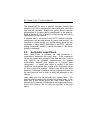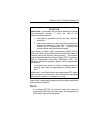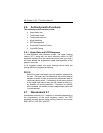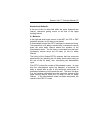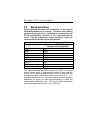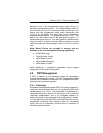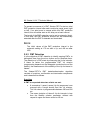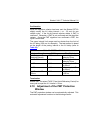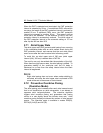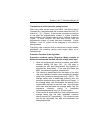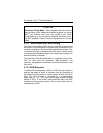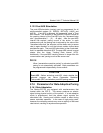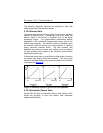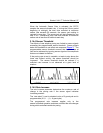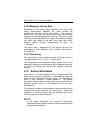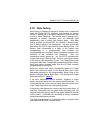
92 Stratos LV/LV-T Technical Manual
When the PMT is detected and terminated, the PMT protection
interval is extended by 50 ms. If no additional PMTs arise within
two days, the length of the PMT protection interval is reduced by
another 50 ms. If additional PMTs occur, the PMT protection
interval is increased by another 50 ms. This occurs until no
more PMTs are detected. In the absence of PMTs, the PMT
protection interval is successively reduced. The initial values of
the PMT protection interval in the automatic setting at 175 ms
after Vp and 400 ms after VES.
2.11 Atrial Upper Rate
The atrial upper rate (AUR) prevents atrial pacing from occurring
in the vulnerable phase after an atrial sensed event during the
PMT protection interval, and ensures that the next atrial paced
event occurs after the heart’s natural atrial refractory period.
To avoid this, an atrial upper rate of 200 ppm (atrial upper
interval (AUI), 300 ms) is started after a PMT-As.
The next Ap can only be emitted after the expiration of the AUI.
When there are high sensor rates, the atrial pacing is shifted. To
guarantee stability of the ventricular rate, the AV delay is
shortened to no less than the safety interval when the basic
interval is lengthened.
NOTE:
Right atrial pacing does not occur when mode switching is
activated, and when the atrial upper rate is activated in DDI
mode at the end of the sensor or basic interval.
2.12 Preventive Overdrive Pacing
(Overdrive Mode)
The atrial pacing rate increases after each atrial sensed event
that is not classified as an atrial extrasystole, in an attempt to
suppress atrial tachyarrhythmias. The overdrive algorithm
triggers atrial overdrive pacing and guarantees that pacing
occurs at a rate slightly above the intrinsic sinus rate. Atrial
overdrive pacing thereby minimizes the number of atrial sensed
events. The overdrive mode is available in modes DDD(R),
DDT/A(R), AAI(R) and AAT(R).



